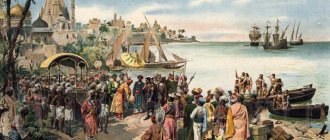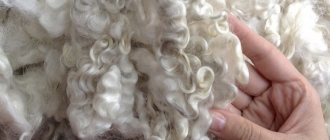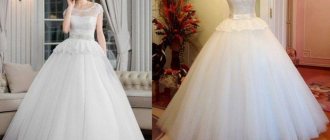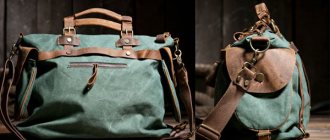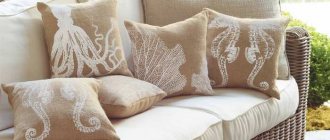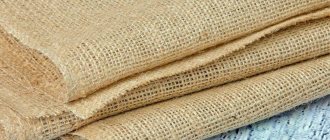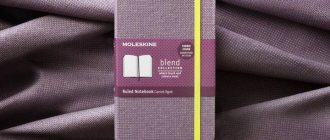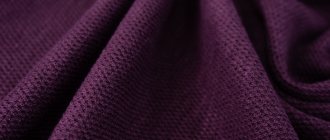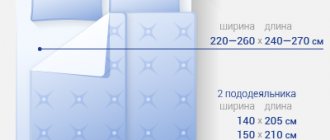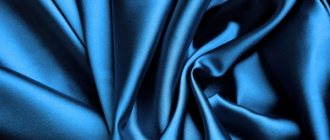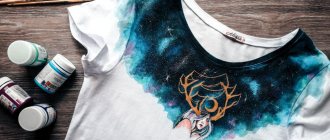What type of fabric is this?
Printed fabric is a material on which a printed design is applied. Previously, it was added to the canvas by hand by pressing dyes in relief onto the canvas. This is where the name “stuffed” comes from.
Printed fabric colors
Nowadays the process of applying a pattern is automated and carried out by fabric printing machines. Only the name was inherited from the old technology.
But even in our time there are craftsmen who do stuffing by hand. They mainly produce small batches of material for exclusive design projects.
Printing on fabric
Applying a pattern to fabric using forms with a relief pattern
Printed heel
Printing (stuffing) is a type of decorative and applied art. With its help, a pattern of monochrome and colored designs is obtained on fabric manually using forms with a relief pattern, as well as fabric with a pattern (printed fabric) obtained by this method.
Change over time
The printed material changed in different historical periods. Sometimes experts can determine the period of manufacture based on the patterns.
Fabrics from the 16th-17th centuries have come down to us heavily faded, but are distinguished by their rich ornamentation and excellent printing technique. The pattern was painted with oil paints on rough dark fabric.
In the 17th century, towards the end, the pattern more and more clearly began to be divided into two main types: geometric and consisting of large, rich floral patterns.
In the 18th century, the printed material became more refined, the pattern was not overloaded, and the ornament was chosen with taste.
And in the 19th century, the pattern again became more strict. A more complex, cubic heel appears.
Folk art
Speaking about printed material, one cannot fail to especially note the art of carvers. They faced a difficult task: to convey the image in an understandable form, so that it would be recognizable, and at the same time, so that it would fit beautifully on the fabric.
At different times, plants, images of people, animals and even genre scenes were in demand in patterns. All this required the master to have special powers of observation and the ability to express the desired images in a stamp.
Ancient art
Printmaking is one of the ancient types of folk arts and crafts, found among many nations.
In Russia, the technology for producing printed fabrics has been known at least since the 10th century. Mass production of printed fabrics and the flourishing of industries involved in the production of printed fabrics occurred in the 18th - first half of the 19th centuries.
Interior of a printing workshop in the Ethnographic Museum, St. Petersburg
In the 18th century, large complex patterns were common in Russian printed cloth, requiring a certain amount of skill to obtain an even pattern.
In the 19th century, smaller designs became common. Small printed boards became an everyday item and were sold at fairs everywhere. Heel-printing gained particular popularity in the northern regions, where production died out already in the 1920-1930s. Even printed boards with “fashionable” drawings of steam locomotives and tractors have been preserved.
Sundress made of printed fabric. State Historical Museum collection
Printing technology
For heeling, wooden stamp molds with a pattern are made. Making such forms is a special art of the carver.
The forms can be carved wooden - manners, or inlaid - copper plates with nails, in which the pattern is typed from copper plates or wire.
Heelboards. Exhibition at VDPNI
When printing, a paint-coated form is placed on the fabric and hit with a special hammer with a mallet. Hence the name “printing”, “stuffing”. For multi-color designs, the number of printing plates must correspond to the number of colors.
Cubic heel
This is how they began to call the method of heeling, in which the fabric was lowered into a vat shaped like a cube. The vat contained indigo dye. Indigo is a natural dye, it is also called vat.
Printed fabric. An example of printing production. State Russian Museum
There were craftsmen, specialists in block printing, who could give the fabric different shades of blue, at the request of the customer. They were called "blueners".
The method itself consists of stamping a pattern onto a white cloth with wax or clay. Then they were lowered into a cube with dye. At the end of the operation, the wax or clay, and most often a special mixture - wapa, was removed and a blue fabric with white lines of patterns was obtained. The wapa prevented the fabric from staining in the places of the patterns.
Heelboard for Pavlovo Posad shawl
Fishing
It was beyond the capabilities of a private craftsman to do fabric printing, since this required quite a few workers and special equipment. It was profitable to unite in artels.
Fishing was quite well developed in the Russian North, in Kargopolye, as well as in the territory of Kostroma, Vologda, Tver provinces and others.
Artels accepted orders at fairs. To do this, we learned how to make samples. The largest sample is known; it is stored in Sergiev Posad, in the Historical and Cultural Museum-Reserve. This is a strip of fabric 10 meters long, on which different patterns are applied, separated by stripes. Each strip has its own number.
Printed scarf. Museum of the History of Shawls and Shawls
Nowadays, fishing does not have the same scale and has almost been replaced by machine production in factories. But hand-printed heels live on, the traditions continue. There are a lot of master classes, and there are also workshops for making hand-printed fabrics.
Shawls
Nowadays, one of the printing methods is still used in the production of scarves at the Pavlovo Posad factory.
Sketch of a printed scarf. Museum of the History of Shawls and Shawls
As in earlier times, the patterns consist of complex elements that are applied in stages. Much is done manually, although much has been automated. For example, the shapes of printed boards are no longer cut out by master carvers as before, but are made on computer-controlled machines. But the principle of printing remains.
The article was prepared based on materials: Wikipedia, CC BY-SA 3.0. Photo credits: 1–8 Guide to Russian Crafts, CC BY-SA 3.0
Share link:
- Click here to share content on Facebook. (Opens in a new window)
- Click to share on WhatsApp (Opens in new window)
- Click to share on Pinterest (Opens in new window)
- Click to share on Skype (Opens in new window)
- Click to share on Telegram (Opens in new window)
- Click to share on Twitter (Opens in new window)
- Click to share posts on Pocket (Opens in new window)
- Click to share on Reddit (Opens in new window)
- Click to share on LinkedIn (Opens in new window)
- Click to share posts on Tumblr (Opens in new window)
- Send this to a friend (Opens in new window)
- Click to print (Opens in new window)
Liked this:
Like
Origin story
which has long been famous for cotton fabrics and a variety of natural dyes, is considered the birthplace of printed fabric Then this art was mastered by the peoples of Asia and Egypt. In China there are samples of fabric that date back to 220 AD.
Printing technology came to Europe at the end of the 14th century. Heel prints with gold and silver patterns were especially popular. Italy and Germany were considered the main production centers of printed fabrics. On the territory of Rus', fabrics with printed patterns were known back in the 12th century.
Each nation had its own characteristics of applying patterns to canvas. In China they used stencils, while in Europe they used wooden stamps instead.
Gradually the technology improved; metal plates replaced primitive stamps made of wood and scrap materials. And in 1850, the process was mechanized, and the rapid development of the textile industry began.
Story
As already mentioned, the history of printed fabric begins in India. Since ancient times it has been used to make bed linen. Thanks to the bright and unusual colors of this country, calico fabrics appeared, which became widespread throughout the world.
Europe and the Middle Ages
After India, technology migrated to Egypt, where they began to decorate cotton fabrics with printing. This happened only in the 15th century. Europe learned this method only in the 17th century and only after the import of fabrics from the east. They quickly gained popularity and were in demand, displacing materials of the same color.
Important! In addition to bed linen, printed textiles began to be used for upholstery, interior decoration and sewing original and high-quality clothes for rich people.
Today, printed fabric is available to everyone and is sold in almost any textile store.
Stencil and cotton cloth
New time
The bulk of printed fabric in modern times was produced in Germany. This is due to the fact that fabrics produced and imported from Italy were very expensive. That is why the Germans began to make their own textiles, the patterns on which were printed using precious metals, such as silver and gold.
A more advanced method of stuffing was invented in Switzerland, where it was produced using copper recessed plates. Later, a cylindrical roller was invented for dyeing fabric in various patterns and colors.
Fabric composition and its properties
The basis for printing is a material of natural origin, but synthetic fibers are added to improve their physical properties.
Basics for printed fabric:
- Cotton. Fabric bases made of cotton fiber are durable and affordable, and are hygroscopic.
- Linen. Linen materials are highly durable, do not accumulate static electricity, are hypoallergenic, and have an antibacterial effect.
- Silk. Silk products are soft and pleasant to the body, have a noble shine in the sun and excellent hygienic properties.
- Wool. Wool-based fabric is elastic and pliable, does not wrinkle, holds its shape well, does not absorb odors, and has excellent hygroscopicity.
Characteristics of fabric types
The choice of material for curtains must be taken very seriously, because this will increase the appearance, service life and methods of caring for the fabrics. Nowadays, polyester is added to most fabrics, which increases their strength. The main criterion when choosing a product will be its softness and pliability.
Next we will look at the typical types of fabrics that are used for sewing curtains.
First, let's look at natural fabrics. Linen is the most environmentally friendly material, it “breathes”, has a rather rigid structure, but its disadvantage is that it fades very strongly and quickly, so it is not recommended for use in very well-lit rooms. You can make beautiful curtains from burlap.
Cotton is durable and wear-resistant, dyes well, it is easy to apply printed patterns or embroidery on it, the disadvantage is the same as that of linen. Silk curtains will decorate almost any window, the fabric is beautiful and durable, almost does not wrinkle, but, unfortunately, it is also susceptible to fading, therefore, in order for silk curtains to serve you longer, you need to sew a lining to them.
Organza is a very durable, but at the same time light, airy fabric; it will perfectly highlight the good view from your window.
Next we will talk about synthetic fabrics, here we will look at brocade, burlap, polyester, acrylic curtains, and even curtains from old postcards. Ready-made roller blinds made from these materials will become an indispensable decoration of your home.
Curtains made from one hundred percent polyester or in combination with cotton will be the most practical option, since they are easy to wash, do not fade as much, and it is not difficult to apply designs or embroidery on them.
Viscose is another practical and very durable material, which is also fire-resistant, so using such curtains in the kitchen will be a profitable solution.
Brocade is a rather heavy fabric; it is made from silk, cotton and synthetic fibers; the relief pattern on its surface is similar to embroidery. To remove all the shortcomings, when choosing brocade curtains, count on the fact that they must have a lining. Brocade is used for long draperies and to decorate the top edge of finished curtains.
Damascus is made from mixed fibers (can contain silk, wool, cotton, etc.), has a jacquard weave, matte and shiny areas on it are adjacent to each other.
Velvet is ideal for decorating official premises, it comes in silk and viscose (it can also contain polyester fibers), and has a short, pleasant pile.
Taffeta - has a smooth, shiny and silky surface, but is very durable, sometimes used to make clothing.
Satin consists of silk, cotton, linen fibers, shiny on the outside, matte on the inside.
Another interesting “fabric” for curtains is postcards, and even from postcards you can make quite decent curtains. Not so long ago there were fashionable curtains with long chains - stripes, the material for their manufacture was postcards and paper clips. This will not only help you get rid of old junk and turn it into a new finished product, but also preserve old memories and find new uses for cards.
Types of fabric
Main types:
Calico
Dense fabric with good wear resistance. Used for sewing bed linen. The drawings on this canvas are particularly bright.
Poplin
During production, fibers of different thicknesses are used, which gives the fabric an interesting texture. Soft and pleasant to the body material that does not shrink. Used for sewing bed linen, clothing and home textiles.
Satin
The material has a smooth surface and high strength. Used for the production of 3D printed bed linen.
Printed satin
Smooth and durable base with a glossy sheen. Ideal for 3D printing. Used in home textiles and clothing.
Chintz
It is particularly soft, since cotton fibers are not bleached during the production process, but can shrink and become very wrinkled. But it does not shed or fade in the sun.
Linen
In its pure form, it does not stain well, wrinkles a lot and shrinks. Therefore, it is most often mixed with cotton or synthetic fibers. Used for the production of home textiles and clothing.
Kulirka
Light, airy and elastic fabric used for sewing summer and children's clothing. Requires delicate care, as it is prone to deformation.
Jacquard foucrault
Mainly made from synthetic materials. It has an interesting texture and is used to make curtains, upholstery and clothing. It is not demanding in terms of care.
Manufacturers
There is a wide range of printed fabrics from various manufacturers on the market. The main supplier is China, which has all the conditions for fast and high-quality production of a wide variety of types. Russian companies make up only a little more than 15%. The most popular domestic factories are located in the city of Ivanovo.
| Manufacturer | A country | Products |
| Russia, Ivanovo | Cotton; CPB; blankets; pillows; towels | |
| Textile Association "Monolit" | Russia Ukraine | Home textiles; bed sheets; workwear. |
| "Trekhgornaya manufactory" | Russia Moscow | Cotton fabrics and finished textile products for the home |
| Textile Line Company | Russia, Ivanovo | Cotton fabrics |
| Belarusian Textile Center (BTC) | Republic of Belarus | fabrics for home textiles and workwear; home textiles. |
| Anadolu Dokuma (Adok) | Türkiye, Ankara | Textiles for cars |
| Akar Group | Türkiye, Bursa | Curtain fabrics |
| E Stronger Woven (Taizhou) Factory | China, Tianzhou | Wide textile range |
Cotton fabrics are very diverse. They can be classified according to the type of weave and finishing method. It is difficult to strictly limit the scope of use of these materials: from flannel for children's things to cretonne, which is used to upholster furniture.
Read about the advantages and disadvantages of the Belgian Isosoft insulation here.
Since the textile industry now uses high-quality modern dyes, the features of caring for printed fabrics are determined precisely by the composition of the fibers and the type of their weave. The designs do not fade even after repeated washings, the colors remain fresh and practically do not fade in the sun. Gone are the days when brightly printed items become dull with a barely noticeable blurry pattern after washing. Now the dyes are resistant to water and high temperatures. In order to choose the right care for such products, you need to be guided by the type of fabric.
The range of applications of all of these types is extremely wide. They are highly valued by consumers for their variety of colors, intricate patterns and originality. The variety of materials used as a basis will satisfy the needs of any buyer.
© 2021 textiletrend.ru
What standards are used in production? What do they take into account?
Fabrics produced at enterprises must comply with standard samples of artistic and aesthetic indicators approved in accordance with GOST 15.007 and GOST 15.004.
The fabric on which printing will be applied in the future must comply with the technical characteristics established for each type of fabric.
After processing, the fabric with a printed pattern is checked for appearance defects in accordance with GOST 161-86. Particular attention is paid to the uniformity of pattern application and the quality of painting.
How to determine the front side
Before you start cutting, you need to determine the front side. In the case of printed fabrics, this is not always easy. If the pattern is large and clearly defined, there should be no problems. But on materials with a blurry print, it can be difficult to understand which side is the front side.
The easiest way to determine the front side is visual . For printed fabrics, the front side is brighter, with a clearly defined pattern, and the back side is faded, the boundaries of the pattern are blurred. Small nodules and thickenings are always brought out on the wrong side. On the front side such defects are absent or less pronounced.
Satin weave textiles always have a shiny front side. Materials made with twill weave threads have a characteristic feature - a relief ribbed pattern. On the front side the pattern is more convex than on the back.
The next way to determine the right side of printed fabric is by the edge (a compacted strip along the edge). On it you can see the punctures made by the loom. The needles are inserted from the inside out, so the holes are clearer and more convex on the front side.
Choose fabrics with a printed pattern for sewing clothes, home textiles, and linen. Bright drawings lift your spirits and add variety to your drab everyday life.
Printed fabrics
NEWS ENCYCLOPEDIA LIBRARY SITE MAP LINKS ABOUT THE PROJECT Biographies of masters Painting Sculpture Architecture Fashion MuseumsAmong the techniques for decorating fabrics, there is a manual way of decorating them by stuffing. Such fabrics were called printed ones. Initially, this was done by icon painters-“herbalists”, and only much later did special craftsmen for decorating fabrics and woodcarvers appear.
The patterns were printed on white or painted canvas using wooden forms. Boards with carved ornaments were made from hard wood: birch, pear, maple, walnut.
Entire districts of Russia were engaged in slaughtering. Men's and women's clothing, church vestments and banners were sewn from printed material, tablecloths, canopies, curtains, and book bindings were made. It existed both in the peasant house and among the wealthy urban strata of the population, where this patterned fabric replaced expensive imported silks and velvets.
Russian printed fabrics can be divided into white earth fabrics, the background of which was left unpainted, and cube fabrics, the name of which is associated with the technique of dyeing fabrics in cubes.
On ancient printed heels, the pattern was applied with oil paints using the so-called overhead method. The board covered with paint was placed on a damp canvas and an imprint of the pattern was obtained on the cloth. In the 19th century, in many counties they made cube heel - fabric with a white pattern on a blue background. This fabric was made using the “reservation” method. A pattern was applied to a white canvas from a board covered with vapa, that is, a mixture of clay, vitriol and an adhesive substance. The fabric was then dipped into vats of blue dye and it was dyed, leaving the reserved design white.
This type of folk art successfully combines the skills of woodcarvers and printmakers.
The Russian Museum houses an extensive and varied collection of printed fabrics and pailling boards from the 17th to 19th centuries—about 2,500 pieces. This collection gives a clear idea of the slaughtering industries of various provinces.
The patterns of ancient printed fabrics are distinguished by an abundance of ornamental themes, the source of which was the flora and fauna, popular prints, book illustrations, and engravings. In the printed patterns, a unique embodiment of the ornamentation of fabrics brought to Russia from abroad was found. The masters of Russian printed cloth showed a subtle artistic sense, reworking borrowed decorative forms according to their taste.
Printed fabric. XVII century
The most common types of printed patterns in the 17th century were geometric and floral. Various two-color combinations of rhythmically alternating squares, checkers, stars, intersecting circles, rosettes, triangles are the simplest of compositions.
A significant number of fragments of prints with a pattern in the form of stylized flowers, like daisies, alternating in a checkerboard pattern with rosettes against a background of black and white triangles have been preserved.
The daisy flower motif is inspired by the real plant world; The background pattern resembles trihedral notched wood carving. The ornament is very simple, but elegant. The pattern and background seem to complement and balance each other.
In other cases, the flowers are placed on a short stem and rise above each other, revealing the internal rhythm of the composition.
Two-color fabrics with enlarged patterns are interesting. The composition consists of large multi-petal flowers and berries among leaves and curls. The splendor of the ornament is combined with subtle developments of plant forms.
There are also plot compositions in printed fabrics. Images of people are very rare in printed matter. All the more curious is the image presented on one of the fragments, apparently of a female figure with raised arms and a figure on a horse. Similar subjects are found in embroidery and weaving. They are associated with the pagan ideas of the ancient Slavs, who deified the forces of nature. The images are relative. The violation of the real relationships of the figures is justified by the decorative composition of the drawing. The free background field is filled with squares or polka dots.
Printed fabric. XVII century
Most heels are made in only two or three colors, but the impression of a rich color scheme is created.
Printed cloth from the 18th century is represented in the museum's collection by a large number of fragments. The fabrics of this time form two groups: peasant printed cloth and factory-made calicoes and calicoes. The latter gradually replaced printed cloth from the everyday life of the urban population. There is a change in technical techniques - the replacement of wooden boards with boards in which all the details of the pattern were laid out from metal strips, plates or nails cut into the thickness of the board. This determined the specific nature of the patterns obtained on the fabric - their subtle graphics, clarity of contours, almost jewelry-like depiction of pistils, stamens, leaves, and fine shading of the design. The pattern acquired smooth lines. Replacing oil paints with custard paints and applying them not to canvas, but to a cotton base, gave the fabric softness.
The fabric pattern becomes more complex. There are large, lush floral patterns, reminiscent of the patterns of European silk fabrics, and small, graphic ones. The stems with large flowers in the form of carnations with a jagged and wavy outline twist whimsically. Usually this pattern was made with red paint with a brown outline on a light background. It seems to spread freely along the plane.
In another case, two green wavy branches with flowers and feathery leaves curl across the background.
The motif of the ornament, typical of Russian printed fabrics of the 18th century, is refined and strict.
During the period of dissemination of popular prints, new subject compositions and motifs for decorating fabrics appeared, gallant gentlemen and ladies were depicted in costumes from the time of Peter the Great. Only fragments of such fabrics have survived, from which, apparently, curtains were sewn. Borrowing images from book illustrations and popular prints, the craftsmen selected and emphasized those elements that made the fabric more decorative.
Printed fabric. XIX century (imprint from a 17th century board) North (?)
Printed fabric. XVIII century With. Ivanovo (?)
Printed fabric. Perv. Thursday XVIII century
Printed fabric. XIX century Arkhangelsk lips
In this group of prints, the favorite was the image of a horseman-hero. This is a unique interpretation of popular prints of Bova-Korolevich or Saltan-Saltanovich in fabric. This type of printed material was received by the museum in 1972 from collector V. F. Gruzdev. It depicts a rider racing on horseback with a spear in his hand, ready to engage in single combat with the enemy. A delightful mixture of features of a slightly comical and at the same time formidable warrior! The rider's clothing - a camisole and short trousers - resembles the costume of Peter the Great's time. Figure of a horse in motion. The image is flat, the drawing is conventional and bold. And the inscription? Why is it read backwards? When cutting it out on the board, the master did not take into account the technique of reverse reflection of the design on the fabric. This can hardly be explained by the inability or lack of habit of cutting letters. Apparently, imitating the popular print in this case, the master printmaker remains faithful to the ornamental principles in decorating the fabric. The inscription, as an element of epigraphy, was not given any importance; it became part of the ornament.
Since the end of the 18th century, hand-printed fabrics have been leaving the city, replaced by the products of calico printing factories. She moves to the village and occupies a large place in peasant life. Throughout the 19th and early 20th centuries, the production of printed cloth fed entire counties. The northern provinces - Arkhangelsk, Vologda, Olonets and the central ones - Yaroslavl, Tver, Kostroma, Nizhny Novgorod have left us a rich heritage of local artisans. And to this day, expeditions of the Russian Museum replenish the funds with magnificent items made from printed fabrics.
Hitting boards. XIX century
Printed fabric. XVIII century
Printed fabric. Con. XIX century Workshop of P. Bocharov. Kostroma
The printed cloth industry in different provinces was sedentary or sedentary. In the first case, the Sinilytsik-beaters walked around the villages and villages, offering their goods:
Housewife-mother, Is there a way to dye yarn, to turn canvases blue, to beat new items? Come out and get a job!
And people flocked to the master from all over the village: some to hand over the work, some to receive it, and some just to find out the news, since the printer could tell a lot when traveling through the villages with his goods.
The richer printers had their own workshops and students; they did not have to go to villages and villages. Such an owner hung out an exhibition-advertisement: a piece of a reserve with all kinds of patterns available in his workshop, and an inscription, for example:
Handkerchief. XIX century Faculty A. Baranova
Chenille vision of Ivan Merkulovich Vasiliev in Ryazan own. house Krasnoryadskaya street.
The cube heel is usually two-color; it is decorated with images of birds, geometric, plant patterns in the form of individual branches and flowers, or a complex interweaving of both. The common technique of filling the background with orange polka dots adds a special colorfulness to the fabric and dynamism of the composition. The image of a bird is very often found in cube prints of the 19th-20th centuries.
On the blue background of the fabric is a repeating image of a bird with outstretched wings. It is organically woven into the overall composition with branches, flowers and leaves. Filling the empty spaces in the background with yellow polka dots brings the pattern to life. Sundresses were made from similar fabrics. The collection of such sundresses in the Russian Museum was replenished during expeditions to the Kologrivsky district of the Kostroma region.
On cube tablecloths there was usually a large rosette in the center and branches curling in a circle with leaves and half-rosettes. On one tablecloth, in addition to the usual pattern, six plates with fish, a fork, a spoon and a knife are placed symmetrically. The empty spaces are filled with plant flower shoots. The hostess of the house would set the table with such a tablecloth, reminiscent of a fairy-tale self-assembled tablecloth, on holidays, or even just for joy and fun. In the collection of the Russian Museum there is a carved board with images of a fish, a knife and a fork. Perhaps the tablecloth pattern was printed from this board.
The names of the craftsmen - carvers of wooden "manners" - have hardly survived, and the boards themselves migrated from province to province. All the more interesting are those prints that, on the basis of documentary data and certain artistic features of the fabrics themselves, can be attributed to one or another workshop.
Similar workshops existed in Kostroma (Bocharov’s workshop), in the Kaluga province (Zaburdaev’s workshop), in the Chukhloma district of the Kostroma province (workshops of the Kirillovs, Shoshin, Balashov, Samoilovs).
Picturesqueness and colorfulness characterize Bocharov's prints, while the graphic design is characteristic of Chukhloma's.
At the beginning of the 19th century, next to the cube printed material, multi-colored calicoes, which were initially made using hand printing, were found next to each other. It was only in the 1830s that it became possible to print calico mechanically. Only shawls and scarves made of cotton and woolen fabrics, which since the mid-19th century have played an important role in Russian costume, were stuffed by hand.
The folk art department contains a collection of patterned woolen and calico scarves from factories in the Moscow, Vladimir and St. Petersburg provinces. At the factories of Labzin, Guchkov, Smirnov, Titov and others, the main products were calico and half-calico. The artistic design of such fabrics was very diverse: there are traditional motifs of folk prints with images of birds, flowers, and motifs dictated by new fashion trends, and all kinds of checks. But the most typical at this time are lush patterns of large and small stylized flowers. The color range is varied and very rich: from delicate pink to deep purple.
Magnificent examples of printed fabrics of the 19th century are also the red scarves produced by Asaf Baranov's factories in Moscow and the Vladimir province. Tulips, carnations, and roses are scattered on a bright red background of scarves. They are amazing for their multicoloredness, combination of large and small patterns, and overall picturesqueness of the ornament.
Russian printed fabrics still delight us with the variety of patterns, ingenuity of compositions, elegant color combinations, and the boldness of constructing decorative forms. This rich artistic heritage is still used by the Soviet textile industry to this day.
Artists study collections of antique fabrics in museum collections and master the rich traditions of the art of hand-printing.
